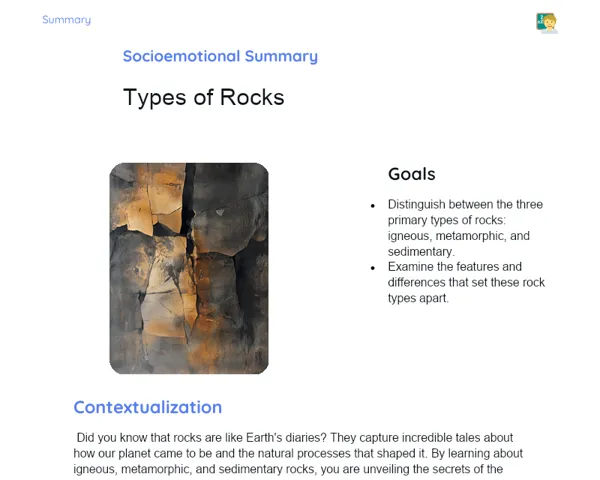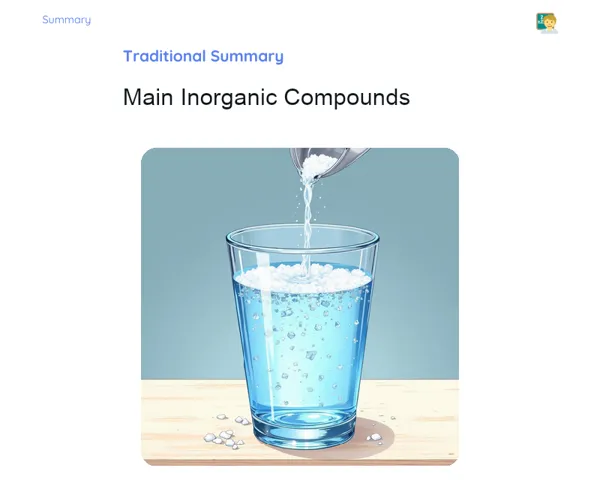Summary Tradisional | Fungi and Bacteria: Decomposition
Contextualization
Every living being goes through a life cycle that includes birth, growth, reproduction, and ultimately, death. During this process, organic matter such as fallen leaves and leftover food is constantly generated. Without the help of specific organisms, these materials would pile up, making our environment unsustainable. This is where fungi and bacteria come in as decomposers, performing a vital role in breaking down this matter and recycling essential nutrients back into the ecosystem.
Fungi and bacteria act as nature’s 'cleaning crew'. They decompose the remnants of dead plants and animals, breaking them down into simpler substances that the environment can reuse. This not only prevents the accumulation of organic waste but also ensures the vital nutrients are recycled, promoting the growth of new plants and ensuring the continuation of the life cycle. Without these decomposers, we would find ourselves surrounded by waste, which would hinder the emergence of new life forms.
To Remember!
What are Fungi and Bacteria
Fungi and bacteria are distinct types of living organisms that play crucial roles in various ecosystems. Fungi are eukaryotic organisms and can be unicellular or multicellular, encompassing mushrooms, molds, and yeasts. They thrive in various environments, from the humid forests of the Western Ghats to the arid deserts of Rajasthan. Known for their efficiency as decomposers, they break down complex organic matter into simpler substances that are then reintroduced into the ecosystem.
Bacteria, on the other hand, are unicellular prokaryotic organisms found almost everywhere, including soil, water, air, and even within other living beings. While some bacteria are beneficial, aiding in processes like digestion in humans, others can cause diseases. In terms of decomposition, many bacteria operate similarly to fungi, breaking down organic matter and recycling nutrients.
Although both organisms are considered microorganisms, they differ significantly in structure and reproduction. Fungi can reproduce both sexually and asexually, while bacteria primarily reproduce through binary fission, a rapid process that can lead to a quick multiplication rate.
-
Fungi include mushrooms, molds, and yeasts.
-
Bacteria are unicellular prokaryotic organisms.
-
Both are decomposers that recycle nutrients in the ecosystem.
Role of Fungi and Bacteria in Decomposition
Fungi and bacteria play an indispensable role in the decomposition of organic matter. Decomposition is the process through which these organisms break down the remains of dead plants and animals into simpler substances. This process is critical for nutrient recycling, ensuring that nutrients are reabsorbed by the soil and utilized by new plants and other living organisms.
Fungi decompose organic matter by secreting enzymes that break down complex molecules like cellulose and lignin into simpler compounds. These enzymes can decompose materials that many other organisms cannot digest, making fungi exceptionally efficient decomposers. Bacteria also release enzymes that aid in breaking down organic matter but often collaborate with fungi to enhance the decomposition process.
In addition to recycling nutrients, the decomposition carried out by fungi and bacteria helps keep the environment clean by preventing the buildup of dead organic matter. Without these decomposers, our surroundings would become unsustainable due to the accumulation of organic waste, negatively affecting the health of our ecosystems.
-
Decomposition transforms organic matter into simpler substances.
-
Fungi and bacteria release enzymes to break down complex molecules.
-
Decomposition recycles nutrients and maintains a clean environment.
Importance in the Cycle of Life
Decomposition carried out by fungi and bacteria is a cornerstone of the cycle of life. The life cycle reflects the events through which organisms are born, grow, reproduce, and eventually die. Following death, the organic matter is broken down by fungi and bacteria, converting it into nutrients that can be utilized by plants and other organisms.
Through the decomposition of organic matter, these organisms recycle essential nutrients such as nitrogen, phosphorus, and potassium, which are crucial for plant growth. These nutrients are absorbed back into the soil and utilized by new plants to flourish. This process guarantees the continuation of the nutrient cycle in the ecosystem, allowing for the thriving of new generations of plants and animals.
Moreover, decomposition contributes to the formation of humus, a nutrient-rich substance that enhances soil quality. Humus aids in retaining soil moisture, improving its structure, and promoting a helpful environment for plant root development.
-
Decomposition is an essential part of the cycle of life.
-
Recycles nutrients like nitrogen, phosphorus, and potassium.
-
Contributes to the formation of humus, enhancing soil quality.
Common Examples
There are numerous examples of fungi and bacteria that serve as decomposers in our daily lives. Mushrooms, for instance, are a common type of fungus that helps decompose organic matter in the soil. You can often spot them growing on fallen tree trunks or in nutrient-rich soil. Another example of a decomposing fungus is mold, which can be frequently found on food items like bread and fruit as they start to decompose.
Yeasts are another kind of fungus that not only decomposes organic matter but also plays a key role in producing foods such as bread and beer. Lactobacillus bacteria exemplify decomposing bacteria that are also employed in food production, like yogurt and cheese. These bacteria ferment lactose, a sugar in milk, converting it into lactic acid, which provides yogurt and cheese with their distinctive textures and flavors.
In addition to their role in decomposition, certain fungi and bacteria have significant applications in industry and agriculture. For example, specific fungi are utilized in antibiotic production, while nitrogen-fixing bacteria are pivotal for soil health and plant growth.
-
Mushrooms and molds are common examples of decomposing fungi.
-
Yeasts are used in the production of bread and beer.
-
Lactobacillus bacteria are used in the production of yogurt and cheese.
Key Terms
-
Fungi: Eukaryotic organisms that include mushrooms, molds, and yeasts.
-
Bacteria: Unicellular prokaryotic organisms found in almost all environments.
-
Decomposition: Process of breaking down organic matter into simpler substances.
-
Nutrients: Substances recycled during decomposition, essential for plant growth.
-
Humus: Nutrient-rich substance that results from decomposition, improving soil quality.
Important Conclusions
Decomposition is a vital process facilitated by fungi and bacteria that transforms complex organic matter into simpler substances, recycling essential nutrients for the ecosystem. These organisms, by breaking down the remnants of dead plants and animals, prevent the buildup of organic waste and ensure the continuity of the life cycle, enabling the growth of new plants and promoting environmental sustainability.
Fungi and bacteria are common decomposers we encounter in our daily lives, such as mushrooms, molds, and lactobacillus bacteria. They also find practical applications in food production like bread, cheese, and yogurt. Furthermore, their role in decomposition contributes to the formation of humus, which enhances soil quality.
Understanding the importance of these organisms in decomposition allows us to appreciate the significance of nutrient recycling within the ecosystem. It's essential to recognize the relevance of these microorganisms in our lives and their contribution to environmental sustainability. We encourage everyone to delve deeper into this topic and explore the connections between natural processes and human existence.
Study Tips
-
Review the examples of fungi and bacteria discussed in class and try to identify them in your daily life.
-
Research more about the role of decomposition in the nutrient cycle and its significance for agriculture and environmental sustainability.
-
Explore how fungi and bacteria are employed in food production and industry, considering practical activities like baking with yeast.



